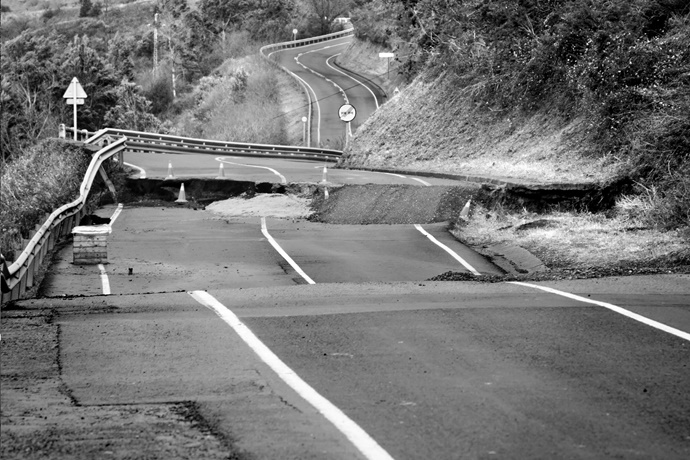Seismic events aren't the only reason the ground gives way beneath our feet. While most property owners are familiar with earthquake insurance, many don’t understand the broader and often more critical protection offered by earth movement insurance.
As catastrophic weather patterns increase and unusual land activity spreads beyond historically active zones, recognizing the distinctions between these coverages, and what they protect, is key.
- Earthquake insurance covers one thing: ground shaking due to seismic activity. If a tremor rattles the foundation of a building and causes damage, that falls within earthquake coverage.
- Earth movement coverage is much broader. It includes earthquake—but also encompasses landslides, mudslides, sinkholes, erosion and even lava flow. The key distinction is that earth movement coverage accounts for damage caused by any shifting of the earth, whether or not it was triggered by seismic activity.
At a glance, the difference between earthquake and earth movement insurance might seem small, but from a coverage standpoint the gap is vast.
Common misconceptions
Many of the most destructive events we see, especially post-wildfire are mudslides or hillsides collapsing days after a storm. This wouldn’t be covered under a standard earthquake policy. Why? Because if there was no shaking, there’s no coverage under an earthquake policy.
Confusion often arises in wildfire and earthquake-prone regions like California, where deforested land can become unstable during rainstorms. Despite the destruction, the proximate cause isn’t seismic, so earthquake insurance wouldn’t apply.
Another often-overlooked example is sinkholes, which occur more frequently in places like Florida. These events fall under earth movement, not earthquake, and are commonly excluded unless specifically addressed in a policy.
Affordability vs. adequacy
From an underwriting standpoint, earth movement insurance is the more comprehensive option — but also significantly more expensive. For example, a large commercial property might pay $25,000 to $50,000 for earthquake coverage alone. Earth movement coverage, which includes a wider scope of perils, could easily be double that cost.
Because of this, many buyers — especially those outside of major development projects or builder's risk programs — often settle for earthquake insurance due to budget constraints. It’s a case of good, better, best. Earthquake insurance is the baseline. Earth movement is the gold standard if you can afford it.
Underwriting considerations
Soil composition, topography and proximity to natural features like hillsides, cliffs and bodies of water all factor into the insurability and pricing of these coverages. For example, sandy soil in a former riverbed may pose a higher risk for liquefaction during an earthquake — a situation covered under earthquake insurance. Meanwhile, a hillside saturated by days-old rain may eventually give way in a landslide — a clear case for earth movement coverage.
These risks are increasingly modeled using sophisticated geotechnical tools that account for past events, regional soil types and slope stability. In highly exposed areas, insurers may outright decline to offer earth movement coverage, especially after a notable event draws attention to the risk. Recently, we’ve seen this firsthand in California cliff collapses and Appalachian mudslides.
Changing weather and increasing risk
Climate change is intensifying these challenges. While seismic activity itself isn’t affected by climate, secondary perils like mudslides and erosion are increasingly common due to weather extremes. More wildfires lead to barren hillsides. More intense rainstorms follow, soaking the soil and triggering mudslides or landslides days after the precipitation stops, just when the danger feels like it has passed.
This shift in risk isn’t just isolated to the West Coast. Events in the Carolinas, Texas and inland parts of the Southeast are drawing new attention to earth movement coverage in regions that haven’t historically considered it.
Finding the right solution
For clients in high-risk areas, whether that risk is seismic or water-related, brokers should advocate for earth movement coverage wherever possible. It offers the broadest protection and can make the difference between a covered loss and a devastating out-of-pocket expense.
That said, affordability remains a major hurdle. For some clients, earthquake insurance may be the most realistic option. In those cases, clearly communicating the limits of that coverage is essential. If there’s risk of sinkholes, landslides or post-wildfire mudslides, they need to know those are not included.
We help you win
Retailers should work with experienced wholesale brokers like Amwins who specialize in earthquake risk and know how early conversations about pricing and coverage expectations can help structure placements and budgets. Our team of expert brokers serves as your partner in providing solutions that best meet your client’s needs.
We work with you to help your clients understand the spectrum of risk and how the resulting coverage options are key to building the right program for their property. When the ground shifts, the details in the policy make all the difference.

